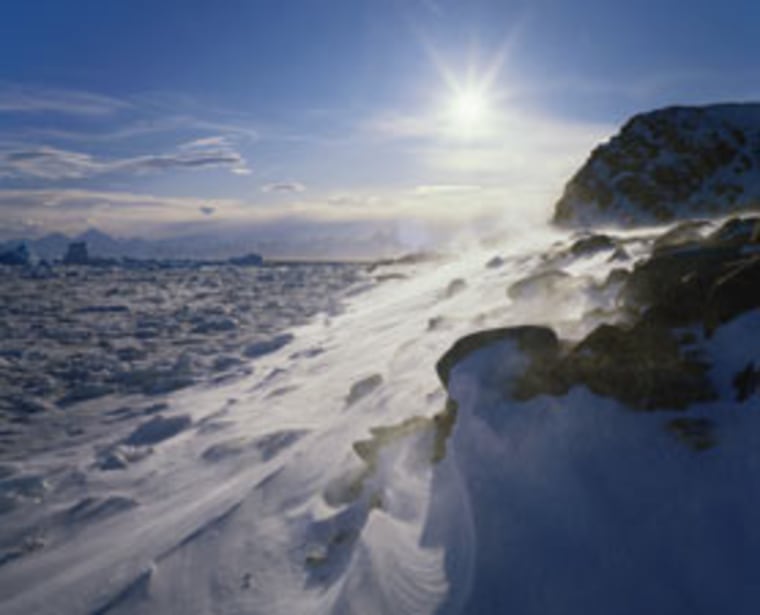Antarctica served as a climatic refuge for animals during the world's largest known, and probably global warming-fueled, mass extinction event, according to new research that focused on one scrappy survivor.
The newly identified animal, Kombuisia antarctica, may not have been able to take the heat at the end of the Permian period 252 million years ago, so it moved to the cooler end of the earth.
Its fossils were found in Antarctica during the 1970s alongside the remains of other hearty Permian species who lived before the emergence of the first dinosaurs and mammals.
Jorg Frobisch recently led an examination of the fossils, including the new species, which he described to Discovery News as being the size of a housecat and having "a compact and robust body, stubby legs and a short tail."
"Kombuisia likely laid eggs, didn't nurse its young and didn't have fur, and it is uncertain whether it was warm-blooded," added Frobisch, a geologist at The Field Museum.
The animal, a reptile-like, distant ancestor of mammals, was an anomodont, a dominant group of plant-eating land vertebrates at the time.
The researchers previously found remains of Kombuisia's relatives in South Africa. With added geological evidence, they were able to piece together what might have happened in Antarctica at a time when 80 to 95 percent of all species in the oceans and on land went extinct.
When the mass extinction occurred, every continent was united into the supercontinent Pangea. According to the researchers, volcanic activity in Siberia may have triggered global warming that eventually killed off countless animals.
Although Antarctica was further north than it is today, it "would have been cooler and probably more humid than other regions in the world of the end-Permian extinction," Frobisch said.
The turtle-beaked and nearly toothless Kombuisia therefore headed south, where it shared Antarctic turf with other animals whose relatives later gave rise to mammals.
Many of these extinction survivors seemed to share a common trait: They were all small.
"Small animals are less susceptible to extinction, since they are more likely to engage in so called 'sleep-or-hide' behaviors, such as hibernation, torpor and burrowing," Frobisch explained.
Co-author Kenneth Angielczyk, an assistant curator of paleomammology at The Field Museum, said, "Finding fossils in the current harsh conditions of Antarctica is difficult but worthwhile."
Such fossils provided some of the first evidence of Pangea's existence, Angielczyk notes, and are now helping to reveal the events that unfolded before and after the Permian mass extinction.
The team's findings, published in the journal Naturwissenschaften, may offer insights into potential survival techniques for modern day animals threatened by climate change.
"Countless species are threatened by global warming today," said Frobisch. "A prime example of a threatened species is the polar bear, whose habitat becomes increasingly smaller as a result of melting sea ice in the Arctic Circle."
"However," he added, "it is questionable whether the polar bear or other threatened animals can respond in the same way as Kombuisia did in the Permian, simply because human activities severely limit the animals' possibilities."
He concluded: "The primary lesson we should learn from the studies of extinction due to climate change in the past is that it is of utmost importance today to control and reverse human induced global warming by taking counteractive measures, such as greatly reducing greenhouse gas emissions."
